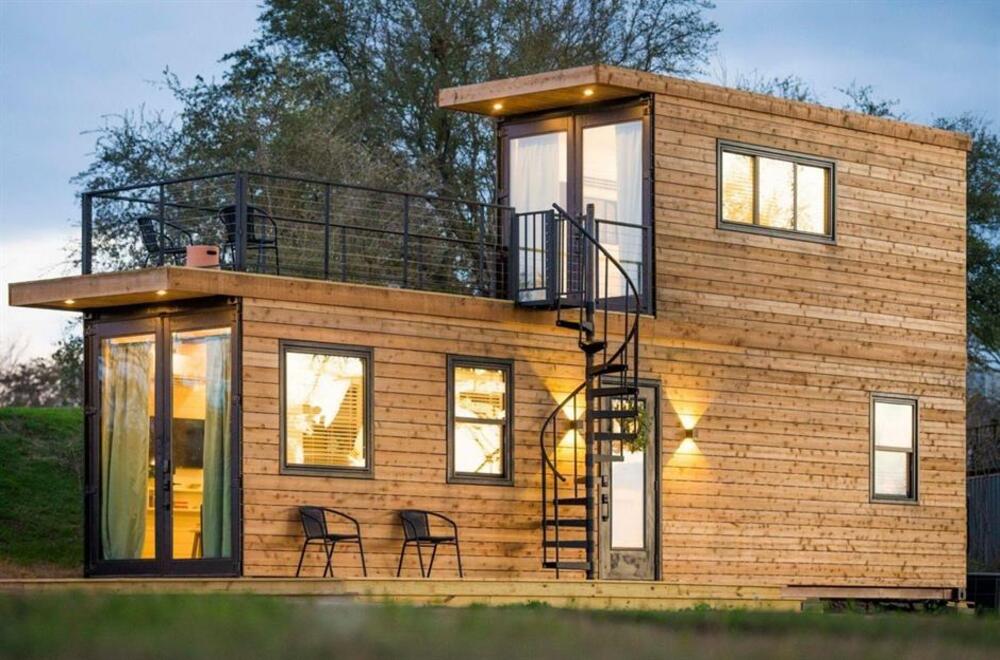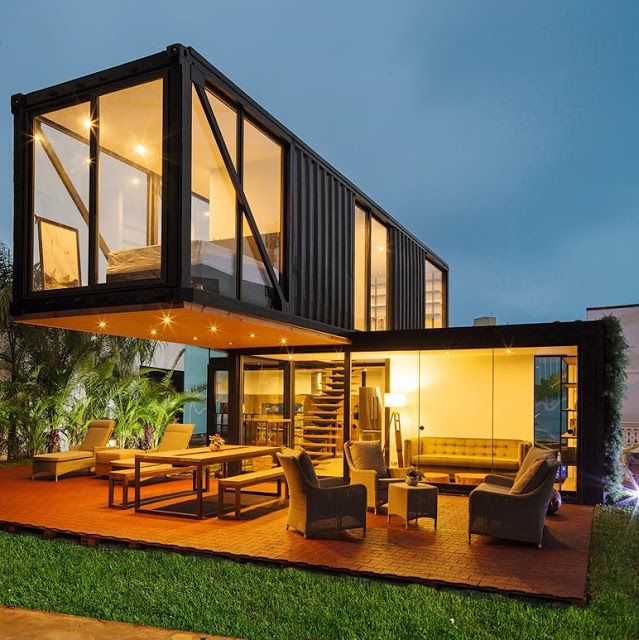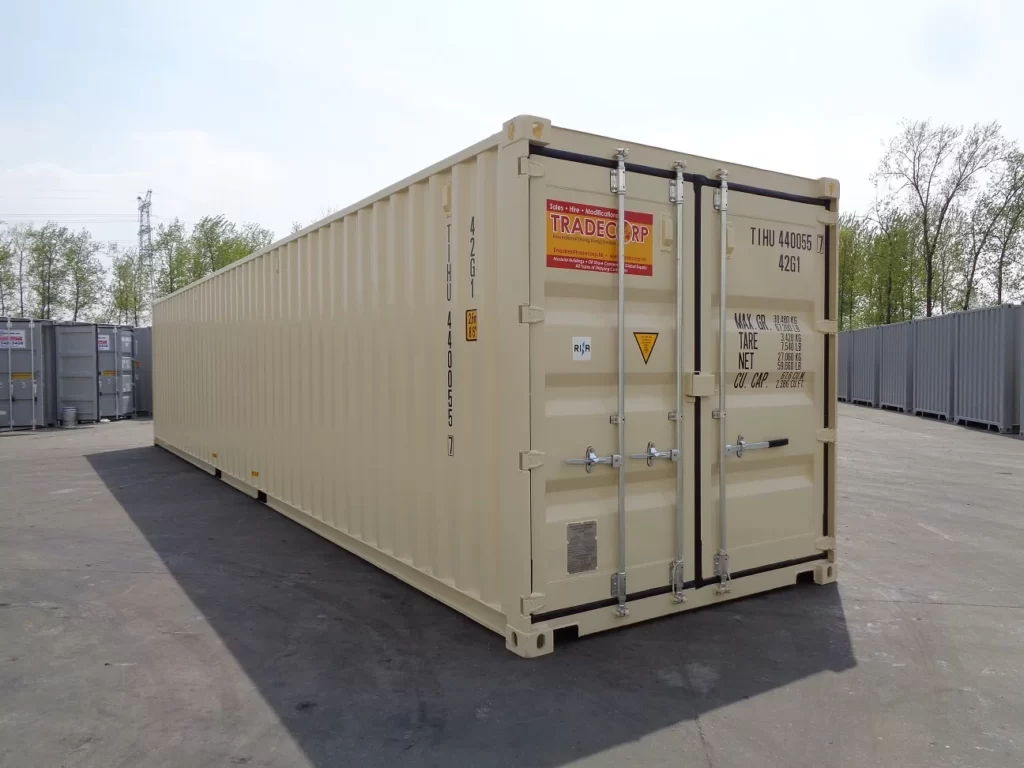Shipping containers are popular as a medium to transport payloads in large quantities. However, these days, their functions have been shifted to many other purposes, and one of them is their conversion into a house. If you are among those who consider opting for a shipping container house, here are five pros and cons:
40ft General Purpose
The 40ft general purpose dry shipping container is an ideal investment for cost-conscious businesses. The large capacity allows you to put more items in it. You don’t have to worry about the safety of your stored cargo. The new 40 feet shipping containers are waterproof, windproof, and able to survive bad weather conditions. Furthermore, this 40-foot sea container is made from corrosion-resistant Corten steel, making it durable and sturdy. It also features solid steel walls, solid doors, and a secure locking system with locking bars to reduce the possibility of theft and cargo damage.
The 40-foot general-purpose container has many uses. As a dry container, dry cargo can be stored and transported effectively and efficiently, and it is also possible to modify the container. Additionally, we can ensure that our 40’ general-purpose containers meet ISO requirements. An active CSC plate is included with every new 40ft shipping container. New and used 40ft shipping containers both have the same strong basic structure that allows these containers to be stacked on the ground or in a ship during sea transport. We offer these containers at reasonable prices. Finally, to save you the hassle, our experienced freight forwarders can arrange delivery of 40ft containers to your location.
Pros of Shipping Container House

-
Less Time-Consuming
A shipping container home can be constructed more quickly than a typical brick-and-mortar house whose construction typically takes seven months to complete.
Assembling a shipping container house is a lot quicker than building a conventional house. Smaller dwellings can be completely constructed in off-site fabrication in three weeks, and larger residences can be finished in a short period of time.
Before the containers ever arrive at their end location, many minor adjustments and alterations can be made at the production site. The DIYer will find shipping containers to be friendlier. Nevertheless, it is a good idea to seek advice from a design firm or an engineer before beginning to build your container house.
-
Low–Cost
Compared to traditional housing solutions that require expensive construction materials and labor, shipping container homes are more affordable. Users can reduce the spending on customizing and arranging the containers by renovating the units using their DIY skills, or you can consult with a constructor.
-
Durable
One of a container’s outstanding qualities is its durability. The initial purpose of its manufacturing is to withstand harsh atmospheric weather and a long voyage on vast seas. Thus, they are a level ahead of conventional houses in terms of strength and durability.
To preserve these two qualities, it is necessary to pay keen attention to how much steel you cut away. If you wish to make a cut on container walls to create an opening for doors and windows, then you need to install reinforcements. Additional steel beams will help to accommodate more weight if needed.
-
Customizable
The customization of shipping containers into homes is simple because they are modular. This characteristic allows builders to construct containers in many possible configurations. Containers are stackable allowing easy construction of multiple floors and various layout creations only by connecting one container to another one. You can work with your architect on a bespoke design.
-
Sustainable
Conventional houses are typically built from wood stud framing, cut timber, and processed wood studs. These construction materials are harmful to the environment and less eco-friendly. Also, the process of transporting the materials contributes to more carbon footprints.
In contrast to the non-eco-friendly conventional houses, containers turned into houses are typically recycled shipping containers, and therefore the conversion greatly reduces the need for construction materials. Moreover, a container house needs fewer resources, making it a more sustainable way of housing construction.
Cons of Shipping Container House

-
Seeking Proper Area
Following the growing trend of shipping container houses, there are not many pre-existing container homes for sale. If so, it needs a plot of vacant land for this purpose. Still, it won’t require much space as it is compared to building a standard house.
-
Getting Permits
In some areas, it may be challenging to acquire the required licenses to construct your shipping container house because it is a relatively new occurrence.
However, a number of states like Texas, California, Colorado, and Oregon host shipping container houses and have laws regulating shipping container housing. Like those states, China, New Zealand, and Cost Rica have had regulations on shipping container housing.
For additional details on zoning regulations, building code requirements, and permit specifications for container dwellings, you can contact the local urban planning office.
-
Possible Toxic Material
Used shipping containers may contain hazardous substances or other contaminants that may pose a health risk. Additionally, they must have had treatment to stop corrosion during their useful life. Keep in mind that containers are composed of steel and are frequently carrying vast ranges of cargo.
Corrosion and rust are inevitable when metal is in salt water. Make sure that your containers have been properly treated so that they can be used in home construction. Additionally, you should have your containers free from rust because it can weaken the structure.
-
Require Insulation
Insulation maintains heat in a shipping container house, and the correct insulation techniques will preserve warmth inside, lower energy consumption, and cut costs.
Things to keep in mind when applying insulation techniques for the conversion of shipping containers into a house are picking the most suitable material types and performing a correct installation. There are many types of materials to choose for shipping container insulations, and you can consult with your technician on choosing the suitable materials and applying the correct installation technique.
It is important to bear in mind that an incorrect installation technique will make the insulation not work to the highest efficiency. Moreover, the improper installation technique increases spending on heating and cooling costs.
-
Keeping Construction Eco–Friendly
One benefit of the conversion of shipping containers into a house is that the construction has less of an effect on the environment. Sadly, not all container houses are eco-friendly.
Serious damage may be present in some containers, and hazardous substances may also be present inside a container.
The elimination of volatile chemicals and fixing the damage diminish the environmental advantages of constructing a home from used shipping containers.
Less effort is required when buying slightly used containers that are still in excellent shape. To lessen your carbon footprint, you must however make sure that the house has good insulation and energy–saving fixtures.
If you are interested in purchasing shipping containers, please visit our web at www.shippingcontainersusa.com and fill out the form.



